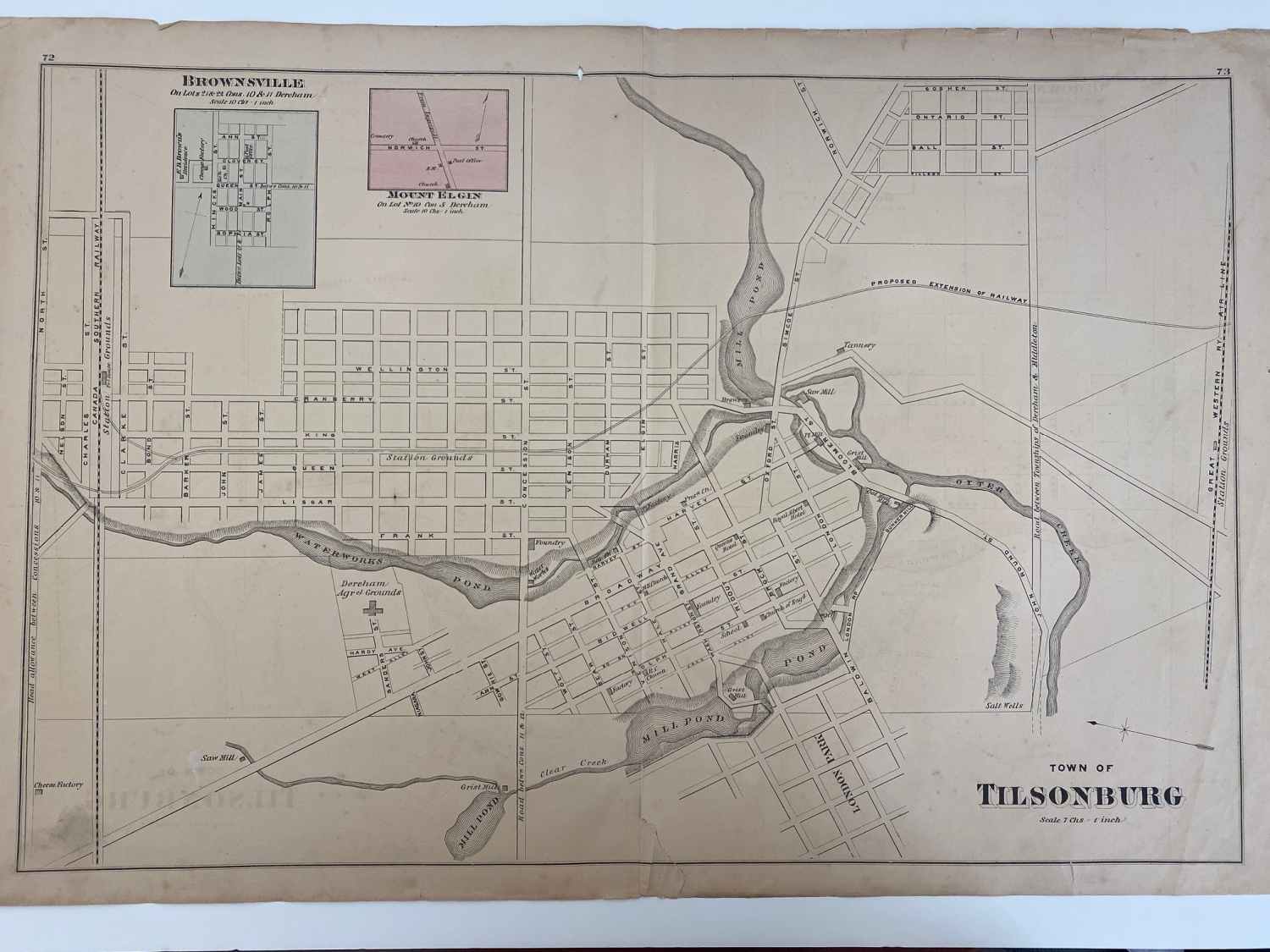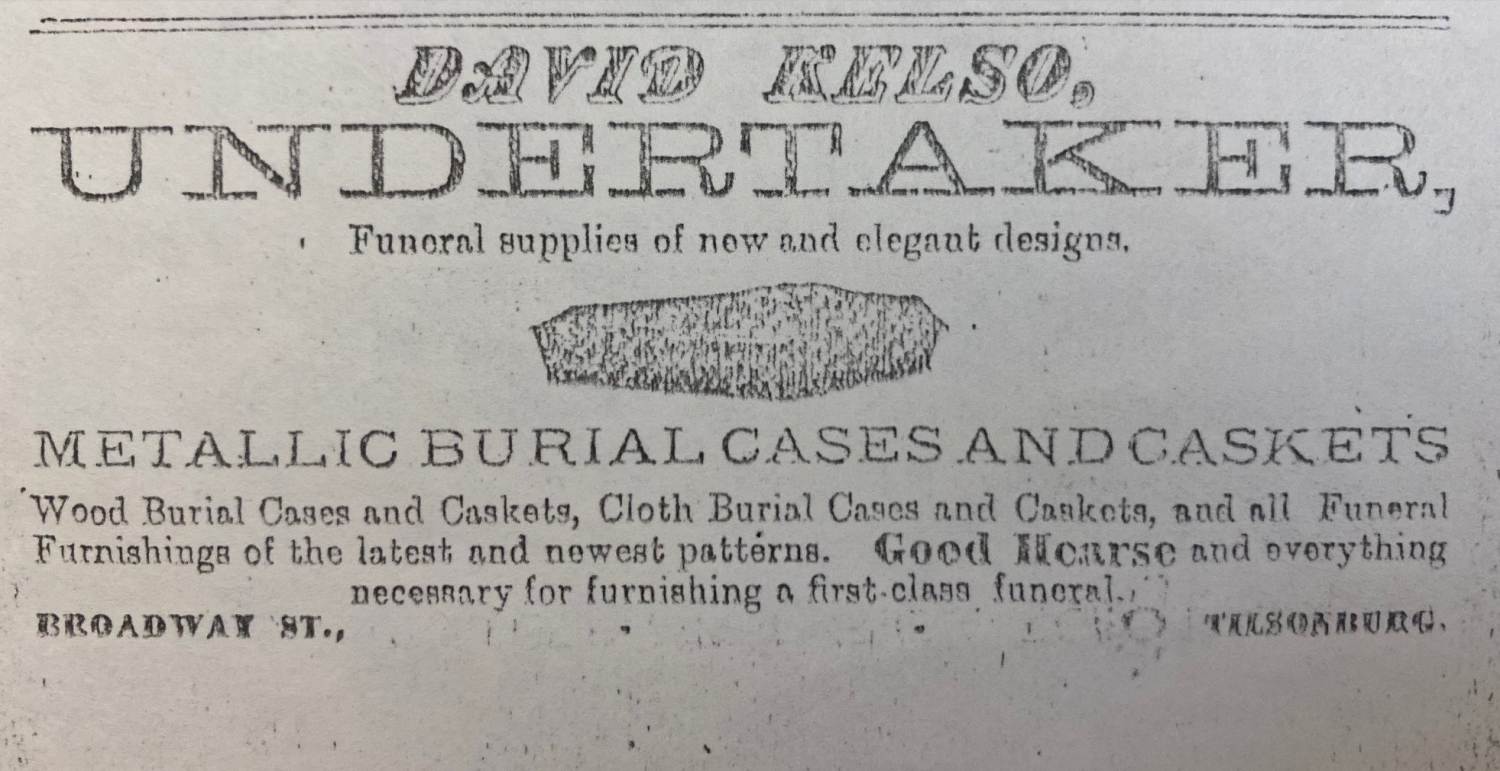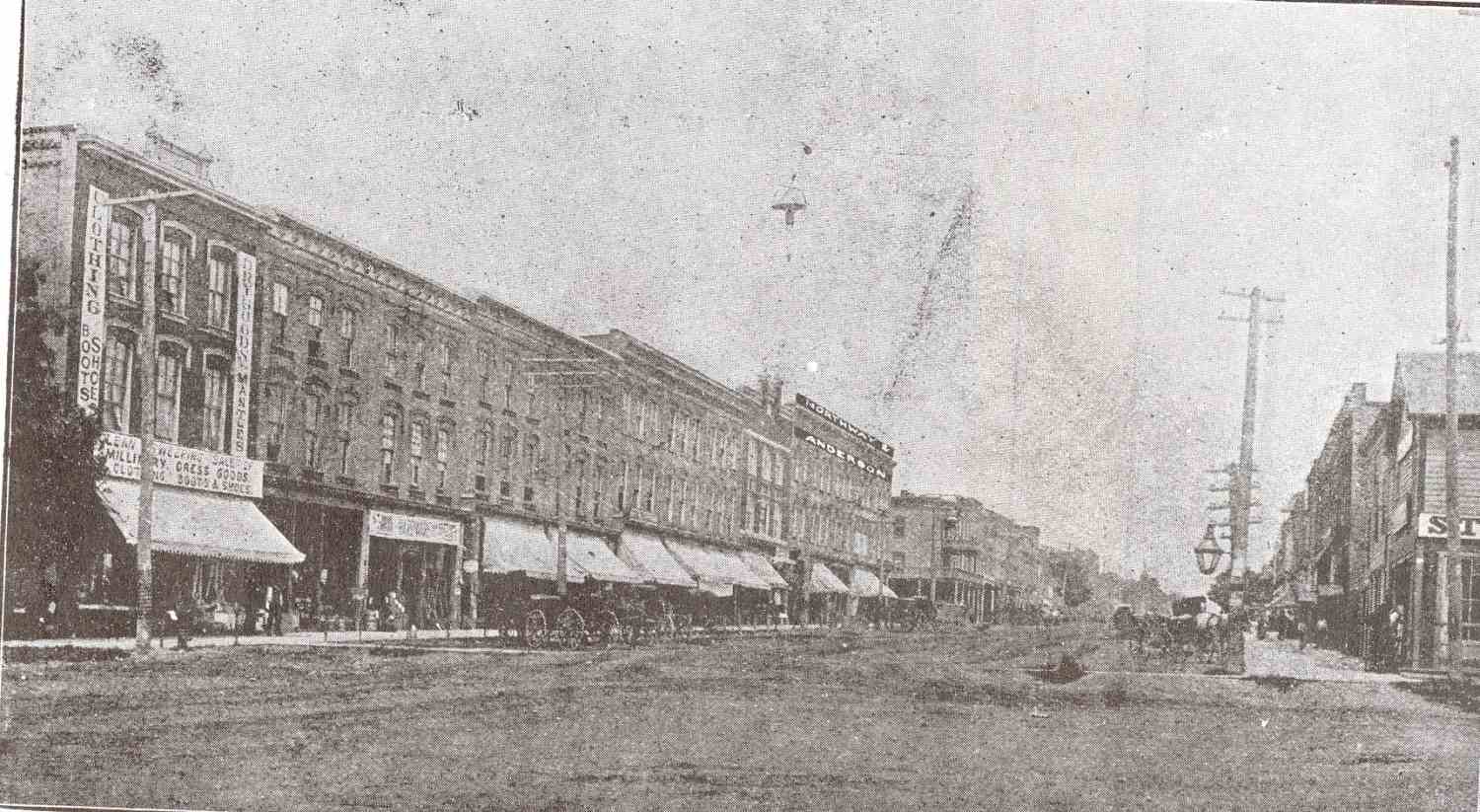Tillsonburg's 150th Anniversary: A Commemorative Exhibit From the Archives
Tillsonburg's 150th Anniversary: A Commemorative Exhibit From the Archives
Discover the history of Tillsonburg's businesses and industry at the time of its incorporation in 1872 with the archives' virtual exhibit.
By Liz Dommasch, Archivist
Originally known as Dereham Forge, Tillsonburg was first settled along Big Otter Creek in 1825 by George Tillson, Benjamin Van Norman, and other immigrants from the United States, who constructed a forge in the area to mine iron ore. Although the forge was only successful for a short period of time, new settlers continued to arrive in the area and new businesses and roads were built.
In 1836, the village was renamed Tillsonburg in honour of George Tillson, one of its original founders. The Tillson family helped establish the community through either owning, starting, or financing many of its early businesses such as sawmills, grist mills, potter factories, and tanneries.
In 1865, Tillsonburg was erected as a Police Village, though this status was only short-lived. Soon members of the community were pushing for improved municipal status with the objective to secure incorporation as either a town or a village. In 1872, the bill to incorporate Tillsonburg as a town received third reading on February 23rd, and assent a month later, on March 2nd. Edwin Delevan (E.D.) Tillson was elected as the town’s first mayor.

Map of Tillsonburg – 1876, Historical Atlas of Oxford County.
By the early 1870s, the area had reached a population of about 1,000 and consisted of a number of general stores, grocers, boot and shoe shops, blacksmiths, grist mills, and a woolen factory, just to name a few of the growing businesses. A decade later, the population had soared to over 3,000 with the introduction of new businesses, such as a Split Pea & Barley Mill, a large sugar manufactory, and a factory for the evaporation of fruit. E.D. Tillson was instrumental in many of these new business ventures.
In honour of Tillsonburg’s 150th Anniversary celebrating its incorporation, the Oxford County Archives created a new online exhibit to explore many of the businesses operating at the time. The exhibit includes stories behind a variety of businesses that shaped Tillsonburg, including breweries, foundries, and photographers, and the men and women who owned them, including W.S. Law, newspaper proprietor; Adam Matheson, hotel owner; Mary Marett, milliner and dry goods store operator; and Albert Freeman, barber.

Advertisement for David Kelso, undertaker, from the 1881 Oxford County directory
The exhibit also includes a feature on the many businesses of E.D. Tillson, including his very own patented Tillson Pan-Dried Oats, which would eventually be purchased by the Quaker Oats Company.
In addition, the exhibit includes a searchable database of the Archives’ collection of Tillsonburg Declarations and Dissolutions of Partnership (1870-1953), by business name, owner name, and type of business. These documents provide a fascinating history into the early Tillsonburg businesses and those that operated them over an almost 85 year period. For those wishing to learn more, please contact archives staff.
Finally, exhibit viewers can also get a look at a number of historical photographs and documents from the Archives and Annandale National Historic Site & Museum's collections.

A historical view of Broadway in Tillsonburg, looking north – courtesy of Annandale National Historic Site & Museum.
Learn more and visit the exhibit online at /Explore-Oxford/Libraries-museums-and-archives/Archives/Exhibits/Tillsonburg.
